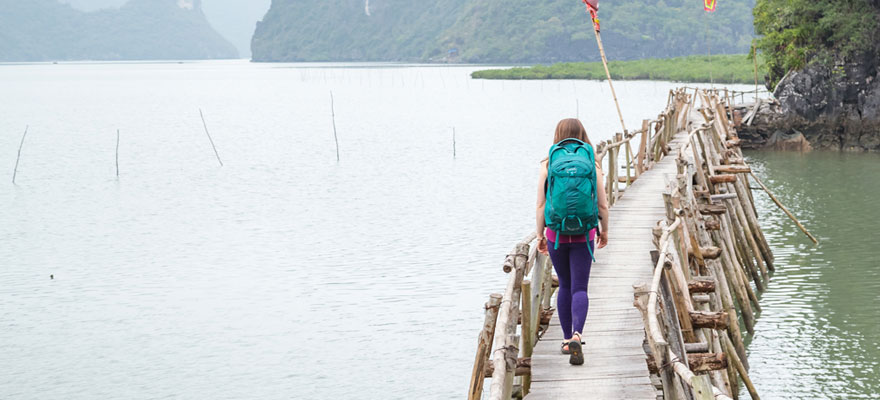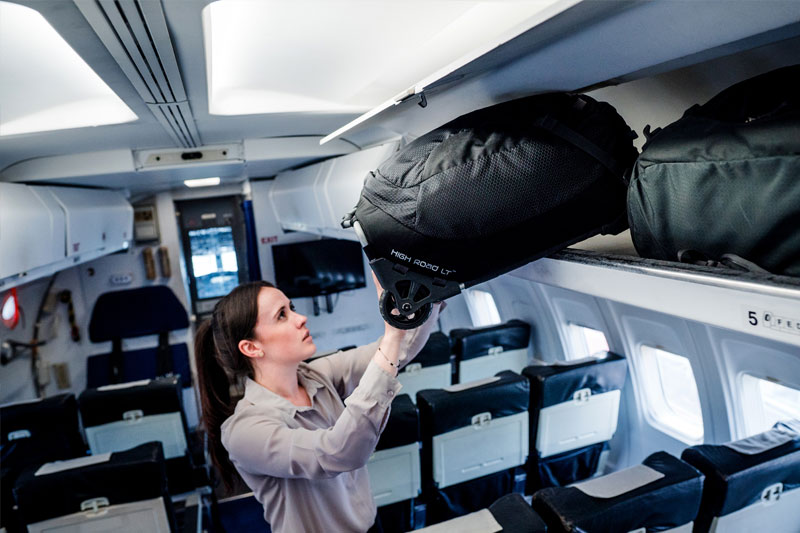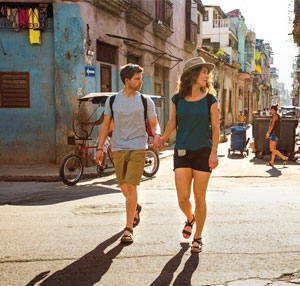A Guide To Sustainable Travel

Words and photos: Osprey
At its core, sustainable travel is about ensuring you consider the environment when undertaking your trips. This doesn’t necessarily mean making huge changes to the way to take your holidays. Instead, it is about many people adopting many small changes. The overall impact of these changes can be huge.
Travel has many benefits for both the traveller and the destination. It offers an exchange of cultures, economic benefits and a different perspective on the world around us. However, it all comes at a cost to the planet. In the first half of 2018 alone there were 641 million international tourist arrivals worldwide, so it’s crucial to look at how we can make our travel more sustainable.
TRANSPORTATION & TRAVEL

Flights account for a significant proportion of global CO2 emissions. To eliminate flight from international travel is unrealistic but we can change the way we use this form of transport.
Lots of airlines have environmental roadmaps stretching into the future but what can be done right now? Carbon offsetting is the process of undertaking a carbon reduction activity to balance a carbon producing one, such as a holiday flight. Many of the major European airlines provide the option to donate to a carbon offsetting initiative - this can be a great way to minimise the environmental impact of your flight.
Another way to fly sustainably is to fly less. The cheapest way to fly usually involves several flights and connections that add layovers, and in turn fuel, to the journey. By spending a little more, you can reduce the time you’re in the air. A more direct flight will inevitably produce fewer carbon emissions. Finally, if you can use greener forms of public transport then do so! Cross-continental trains, inner-city trams and even taxi sharing are great ways to reduce your carbon footprint.
SLEEPING GREEN

Your accommodation can also offer some sustainability wins. If you’re looking for traditional accommodation, such as hotels and hostels, you can check to see if they hold one of the trusted Eco Accreditations. Hotels certified by organisations such as the Green Tourism Business Scheme, Green Globe and STEP have been evaluated and approved by these recognised environmental bodies. For the more adventurous sustainable traveller, there are plenty of 100% green energy lodgings to be found, but you can expect to pay a premium for these. Alternatively, if you're on a budget, there’s always a tent!
THE LITTLE THINGS

Photo: Andrzej Suwara
These small, simple changes can all have a positive impact. Here are a few final ideas to help you take your first sustainable travel steps:
• Try going paperless with your itinerary, confirmations and reservations. Your smartphone can be used to get you through check-in scanners
• Carry a reusable water bottle with you. It's an easy way to cut down on single-use plastic
• Be sensitive to highly visited areas. Follow local guidance, adhere to the rules and stick to the marked paths to minimise your impact on the flora and fauna
• Walk wherever you can. Walking is a fantastic way to immerse yourself in your surroundings and experience your chosen destination fully where walking isn’t possible, opt to travel by public transport
• Do not disturb. Use the do not disturb sign on your hotel room to avoid unnecessary towel washing and room cleaning
• Buy local. Wherever you visit, try to buy from local small business owners, it helps promote sustainable and localised economic growth









